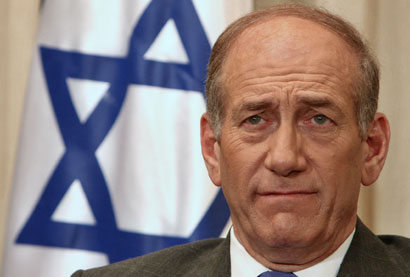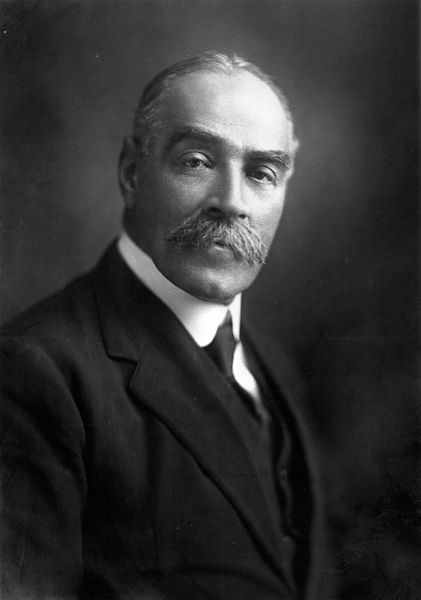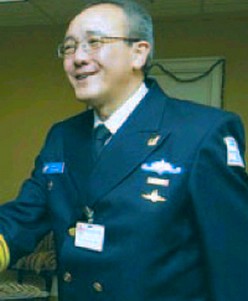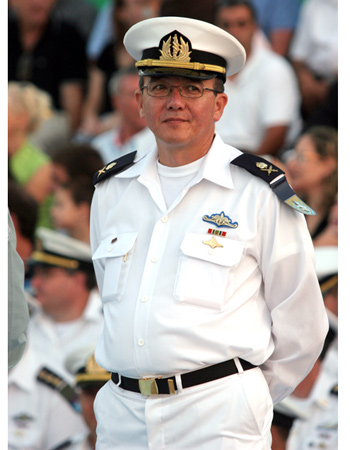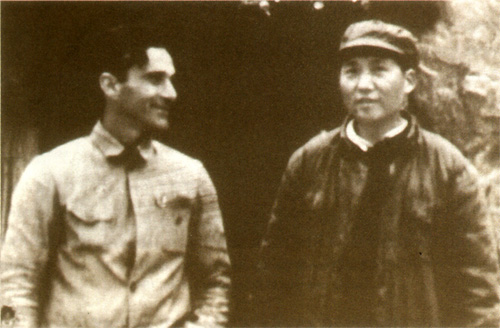General History of Jews in China
There has been a continuous Jewish presence in China for well over a thousand years. While the number of Jews in China has always been small, Jews arrived there in five ripples of immigration:
1.
Ancient Communities: Kaifeng
Jews traveled from West Asia over the Silk Road and by sea via India probably in Tang dynasty (618 – 907 CE). Some scholars think they may have arrived even earlier, during the Later Han dynasty (25 – 220 CE), which would coincide with Roman persecution in Judea.
Jews were certainly established in Kaifeng by 960 CE, which was then called Bianliang, when it served as a capital of the Song dynasty. China was then a world center of civilization and trade. Jews also settled in major shipping cities, such as Guangzhou (a southern coast port with access to SE Asia and Persia), Quanzhou (in SE Fujian and a center for foreign trade), Ningpo (from which the Kaifeng Jews received Torah scrolls after the flood in 1461), Yangzhou (a Grand Canal port near the sea on the Yangzi River), and Hangzhou (also on Grand Canal, which is known to have had a synagogue). There is also evidence of Jewish presence inland along the Silk Road in such locations as Dandan Uiliq, Dunhuang, and Ningxia.
In 1163, a synagogue was built in Kaifeng and the community lived close by the synagogue in two lanes called the North and the South ''Teaching Torah'' lanes. The Jewish community prospered despite repeated disasters, such as fires or the flooding of the Yellow river, which frequently destroyed the synagogue.
Whenever disaster struck, the Jews worked together to rebuild their synagogue. A stele was erected each time to commemorate the rebuilding of the synagogue. The Kaifeng Jews erected four steles in total, one each in 1489, 1512, 1663 and 1679. These stelae, except that of 1663 (which remains lost), are currently kept in the Kaifeng Municipal Museum. The stelae tell us how the Jews believed they entered China, their history in Kaifeng, their view of the development of their religion and their religious beliefs, and their practice of the mitzvot (commandments), which was, for centuries, very traditional.
Kaifeng Contacts with Westerners
In his diary, Marco Polo describes meeting with Jews in China in 1286. He reported that Kublai Khan celebrated Jewish, Christian and Muslim festivals.
However, it wasn’t until 1605, that the Jewish presence in China was really “discovered” by the West when a Kaifeng Jew named Ai Tian went to Beijing to take a civil service examination and serendipitously met Fr. Matteo Ricci, the first Jesuit priest to visit China.
After this meeting, the Vatican sent other Jesuits to Kaifeng. The missionaries left excellent sketches and notes about what they observed and confirmed that the Jews of Kaifeng had exactly the same Torah and observed the same religious observances as the Jews of Europe. Contact with Jesuits ended when China closed itself off from missionaries in 1723.
By 17th century, all the coastal communities had disappeared, leaving only Kaifeng extant. We do not know whether the residents assimilated, moved to Kaifeng, or left China. As China declined, so too did the Kaifeng community. The last rabbi passed away in 1810, leaving little Judaic knowledge in the community. By 1854 their synagogue fell to ruin once again, but the community, now impoverished, lacked the means to restore it.
Shortly thereafter, they were “rediscovered” by Protestant missionaries and other Western travelers. At the turn of the 20th century, the Canadian Anglican bishop, William Charles White of Toronto, tried to revive community but without success.
Kaifeng was a closed city from after the Communist victory until the early 1980s when its Jews were “rediscovered” again by journalists and Jewish tourists. They noted that Jewish self-identity persists, most notably in the form of insisting on being registering as Jews in their identity papers, but that Jewish customs and practices had become a faded memory. However, two indications of a revival of Jewish identity in Kaifeng are the example of a young descendant who went to study in Israel and has returned home to serve his community and, separately, the establishment of a school by other descendants.
The Kaifeng community’s 1000 years of continuous existence is an extraordinary display of commitment to their Jewish heritage and tradition in relative isolation from the larger Jewish world, and in a welcoming but culturally powerful host country.
2.
Hong Kong and Shanghai: Baghdadi Jews
There has been a Mizrahi Baghdadi Jewish presence in Shanghai and Hong Kong since the Opium War, when Britain forced China to open five port cities for trade. Baghdadi Jewish traders arrived in 1844. By 1862 they had a cemetery; by 1887 a synagogue.
Some Kaifeng Jews came to visit Shanghai in 1851, and exchanges between the two Jewish communities culminated in a second visit in 1900 following the establishment by the Baghdadi community of a society to “rescue” them from cultural oblivion.
By WW1, Shanghai had about 700 Jews, with more than half of these of Mizrahi origin. In 1932, nearly 40% of the Shanghai Stock Exchange’s 100 members were Mizrahi Jews. They joined the city's finest clubs, a privilege denied Jews even in liberal parts of Europe and America, and financed some of Shanghai's finest colonial architecture, including the magnificent Children's Palace (formerly the Kadoorie estate), the art deco Peace Hotel (then the Cathay Hotel), Shanghai Mansions (a Sassoon building that later was used to process hundreds of Jewish refugees), and two synagogues: Bet Aharon and Ohel Rachel.
Like Shanghai, Hong Kong’s first Jews initially came from Iraq and India and were British subjects. The Ohel Leah Synagogue was built by Jacob Sassoon in 1901-2. Hong Kong’s Jewish population was 80 in 1900 and 250 in the 1960s, with about a 50/50 split between Ashkenazi and Mizrahi Jews. Today, Hong Kong’s Jewish population stands at about 3500, with several synagogues, Jewish Day School, and an active community center.
3.
Harbin and Points South
Russian Jews first came to Harbin in 1898. They were seeking better economic opportunities in the Russian concession to build Chinese Eastern Railroad in 1898.
After the Russo-Japanese War, decommissioned Jewish soldiers joined these settlers. They were soon followed by refugees from the Russian pogroms of 1905 -07. By 1908, some 8000 Jews lived in Harbin, and the central synagogue was built in 1909. World War I, the Russian Revolution, and the White Russian counter-revolution led to further Jewish persecution. As a result, 10,000 to 15,000 Jews filled Harbin. They created schools, newspapers, a library, Zionist groups, and four synagogues.
However, the 1928 transfer of the railroad to the Chinese and escalating White Russian violence led many Jews to move south to Shanghai, Tianjin, and other southern Chinese cities. In Tianjin, for example, the Jewish population reached 500-600 families between the World Wars I and II.
In 1945, the Soviet Army invaded Manchuria and occupied Harbin. The Soviet administration immediately set about arresting prominent members of the Jewish community, sending many of them back to the USSR. All Zionist and other Jewish organizations’ activities were suspended.
1951 to 1953 saw the immigration of most Jews from Harbin to Israel. By 1962, the Jewish community of Harbin had disappeared.
4.
Refuge in Shanghai
Harbiners moved south to Shanghai, Tianjin and elsewhere after the Japanese took Manchuria in the early 1930s. Many settled in the French concession, where they ran their own stores and restaurants, read Russian newspapers and enjoyed their own music, theater and synagogue, the Ohel Moishe.
By 1939, Russian Jews numbered about 5,000 in Shanghai. They were mostly ordinary people on a lower economic scale, mainly working in restaurants, coffee houses, bookstores and other shops. Some were engineers, lawyers or musicians; many became bus drivers. Some engaged in criminal activities, such as drug smuggling and prostitution.
Then came the Ashkenazim fleeing Hitler from Germany, Austria, Poland and other European countries. From 1938 to 1941, an estimated 18,000 poured into Shanghai. Thousands arrived in rags, with neither entry permits nor any means of support.
Why Shanghai? While the rest of the world closed their doors to these refugees, Shanghai remained one of the rare free transit ports. Shanghai required neither visas nor police certificates. It did not ask for affidavits of health or proof of financial independence. There were no quotas.
They came in three waves:
• The first small wave, in 1933-34, was mostly well-educated, German Jews. Because their flight was not made in haste, they were able to bring the financial resources to re-establish their professional lives in China.
• The second wave, during 1938-39, lasted until restrictions were put on immigration by the Japanese and Western powers. Up to 15,000 Jews came, mainly from Austria and Germany - more than 1,000 per month. Their rapid flight prevented them from taking more than minimal belongings.
• The last wave occurred in 1939 when a few thousand Jews escaped from Poland when Germany attacked. Traversing Siberia and Japan, they arrived in Shanghai as impoverished as the second wave.
With the help from the Mizrahi Jews in Shanghai, a refugee resettlement program was organized. They opened schools, organized playing teams, published newspapers and magazines, and even started a band, scout troops and football teams. They had seven synagogues, a Jewish school, four cemeteries and a performance hall.
After Pearl Harbor in 1941, foreigners from the Allied nations were sent to prison camps by the Japanese. But German and Austrian Jews were considered stateless refugees, and were confined to Hongkou “ghetto” in 1943. Early that year, the Japanese promulgated a bulletin announcing the establishment of a 'designated area’ for ‘all refugees who had arrived after 1937.’ By May, all refugees living in Shanghai who had no nationality had moved to locations designated by the military police ‘for security reasons.’
About 8,000 Jews were moved into the Hongkou “ghetto”, joining the approximately 8,000 impoverished Jews already residing there. The area measured less than two sq. km. Although there was no barbed wire and only light patrols, adults needed officially approved passes to exit the section.
Given the high population density in this “ghetto”, living conditions deteriorated rapidly. Some people begged on the street. Some went to work in Chinese mills. Some engaged in prostitution. For all its problems, considering the alternative in Europe, life was not so bad; it was still an opportunity for life.
This “ghetto” lasted from May 1943 until surrender of Japan in August 1945. During WW2, approximately 24,000 Jews total lived in Shanghai. After the war, the civil war between the Nationalists and Communists resumed, and an exodus of foreigners began almost immediately. Jews left for Israel, America, Canada, Australia and other countries. Until 1948, there were about 10,000 Jews still living in Shanghai. By 1953, only 440 Jews remained, and by 1958 the number fell to 84. In 1976, there were only about 10 Jews in Shanghai. The last remaining Jew died in 1982.
5.
Contemporary Period
In the 1980s, China began opening up to the West. Jewish businesspersons were among the many Westerners flocking to Shanghai, Guangzhou and Beijing.
Today, the Jewish communities of China consist primarily of those in Hong Kong, with about 3500; Shanghai, with about 1000; and Beijing, with at least 200. The Jewish descendents in Kaifeng number perhaps about 1000.
Hong Kong has a longstanding, permanent Jewish community as well as a transitory business one; the Shanghai and Beijing Jewish communities are mostly transitory business or government related people. Except for Kaifeng Jews, Jews are not considered, nor consider themselves, to be citizens of China.
The Chinese educated elite is fascinated by the similarities between the Jewish diaspora and overseas Chinese experiences, between Chinese and Jewish cultures. Many are knowledgeable of the Jewish experiences in China and are proud of their country’s role in providing a refuge for Jewish refugees from Nazism. Most Chinese are philo-Semitic, even admiring the Jewish people for those stereotypic qualities featured in Western anti-Semitic literature.
Jewish studies are flourishing in China, with formal programs in Jewish studies or Middle East studies in Shandong, Shanghai, Beijing, Chongqing, Nanjing, Kaifeng and Kunming. Scholarly exchange programs with Israeli universities and with Jewish studies programs in the U.S.A. are common.
source:
http://www.sino-judaic.org/index.php?page=general_history
